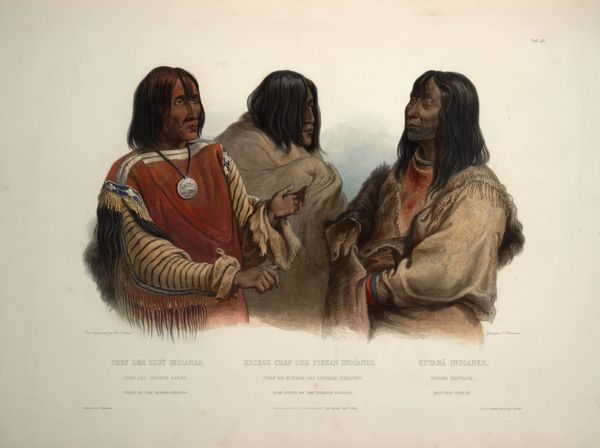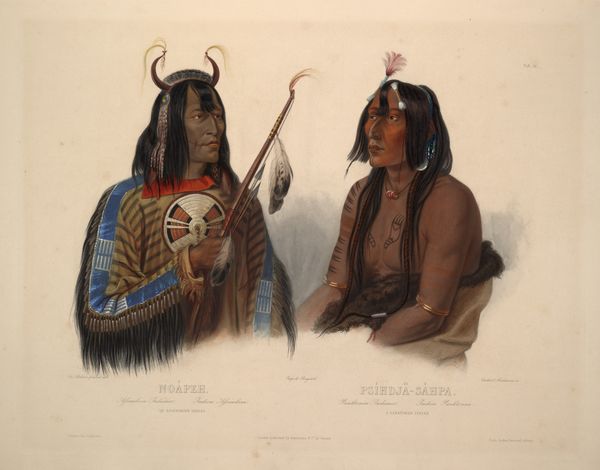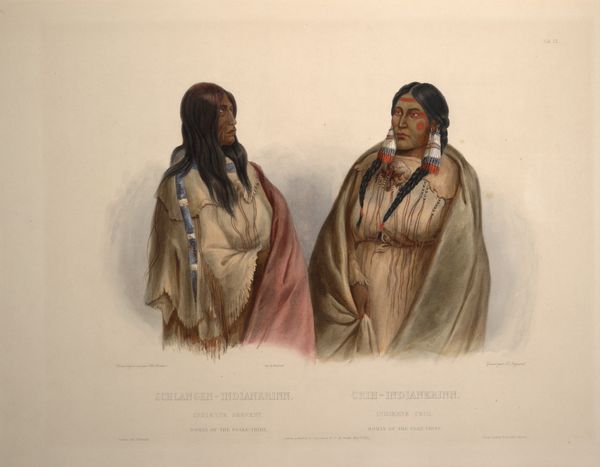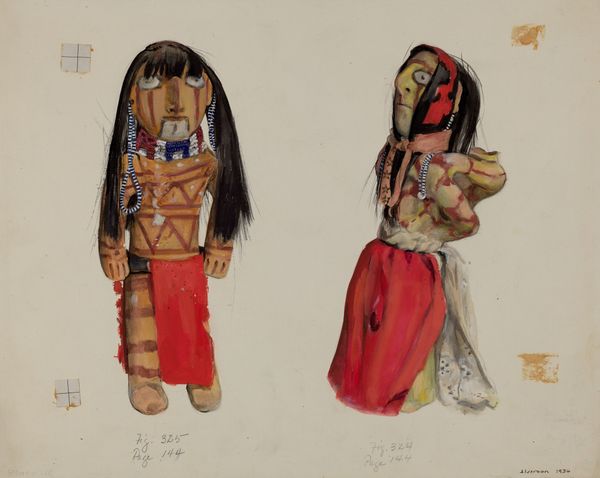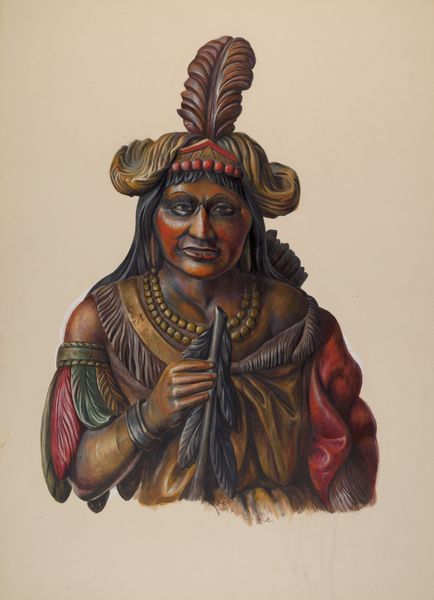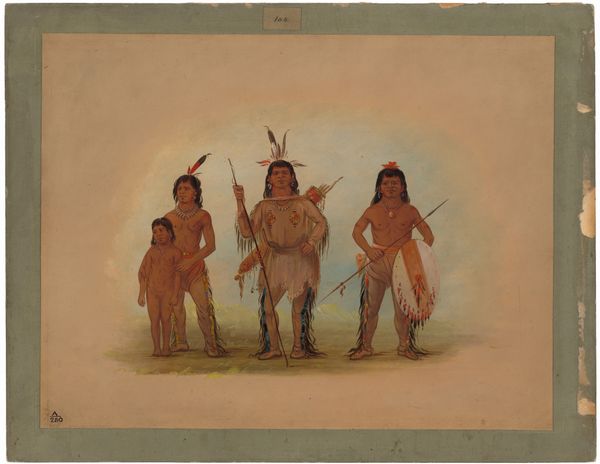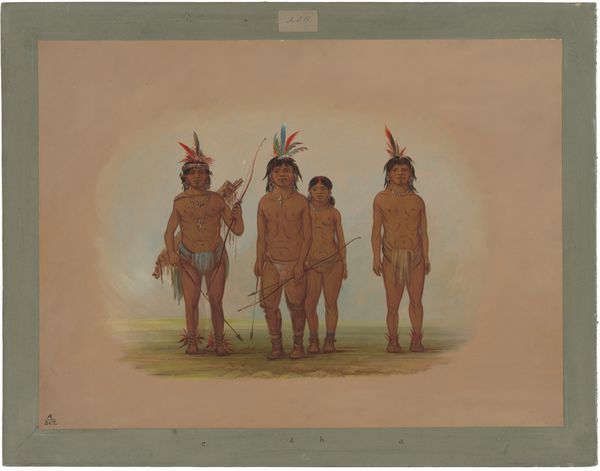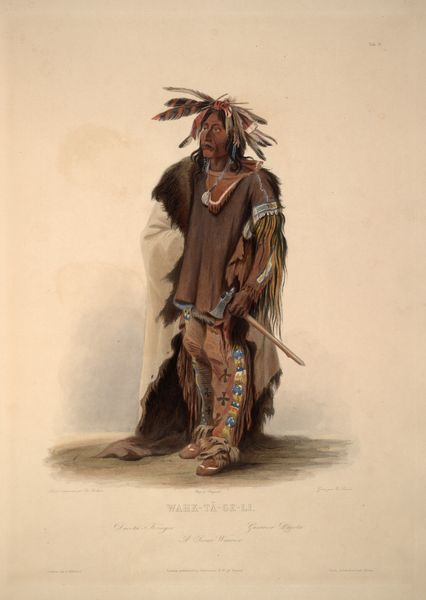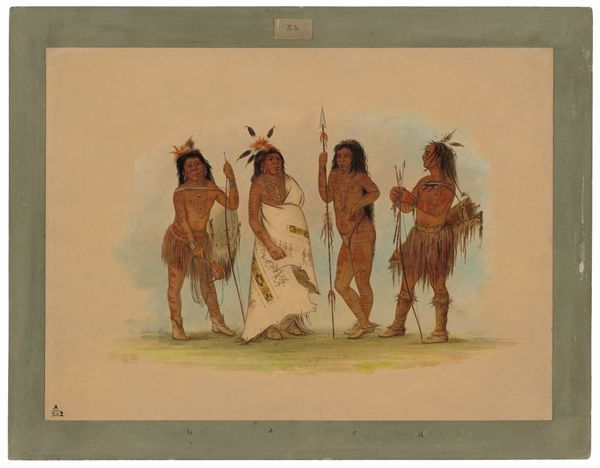
Mehkskeme-Sukahs, Blackfoot Chief and Tatsicki-Stomick, Piekann Chief, plate 45 from Volume1 of 'Travels in the Interior of North America' 1834
0:00
0:00
lithograph, print
#
portrait
#
lithograph
# print
#
oil painting
#
portrait reference
Copyright: Public domain
Curator: Let's turn our attention to this print from 1834, entitled "Mehkskeme-Sukahs, Blackfoot Chief and Tatsicki-Stomick, Piekann Chief" by Karl Bodmer. The print originates from his publication, "Travels in the Interior of North America." Editor: Immediately striking is the stark contrast in how these two figures are rendered; one vibrantly adorned, facing the viewer directly, while the other, in muted tones, gazes stoically off to the side. Curator: That contrast is essential. Bodmer, working alongside Prince Maximilian, aimed to document the appearance and customs of Native American tribes encountered during their expedition. Consider how the texture of their garments—the intricate beadwork, the softness of the furs—are rendered with such care. Editor: But who was this care directed toward? Was it simply for scientific documentation, or was there a political agenda at play? This print, presented within the context of expanding American settlements, inevitably carries the weight of representing Indigenous peoples to a European audience. How might that impact their depiction? Curator: Indeed, analyzing it requires that very consideration. Notice, though, how the composition leads our eye. The chiefs aren’t just ethnographic subjects. The arrangement and detailed rendering grant them a degree of dignity and individual presence within this visual field. There's even a semiotic dialogue in how these features denote power and social standing. Editor: Agreed. This brings up questions about representation itself. Did Bodmer accurately capture these men? Were their visages stylized or idealized to conform to romanticized notions prevalent at that time? It’s imperative that we read this image, recognizing both the artist's intentions and the broader power structures inherent in intercultural representation. Curator: So well said. It truly illustrates the importance of considering multiple viewpoints to fully understand its context and complex message. Editor: Yes, this discussion enriches my view of not only the subjects within the picture, but also the world outside the frame.
Comments
No comments
Be the first to comment and join the conversation on the ultimate creative platform.
